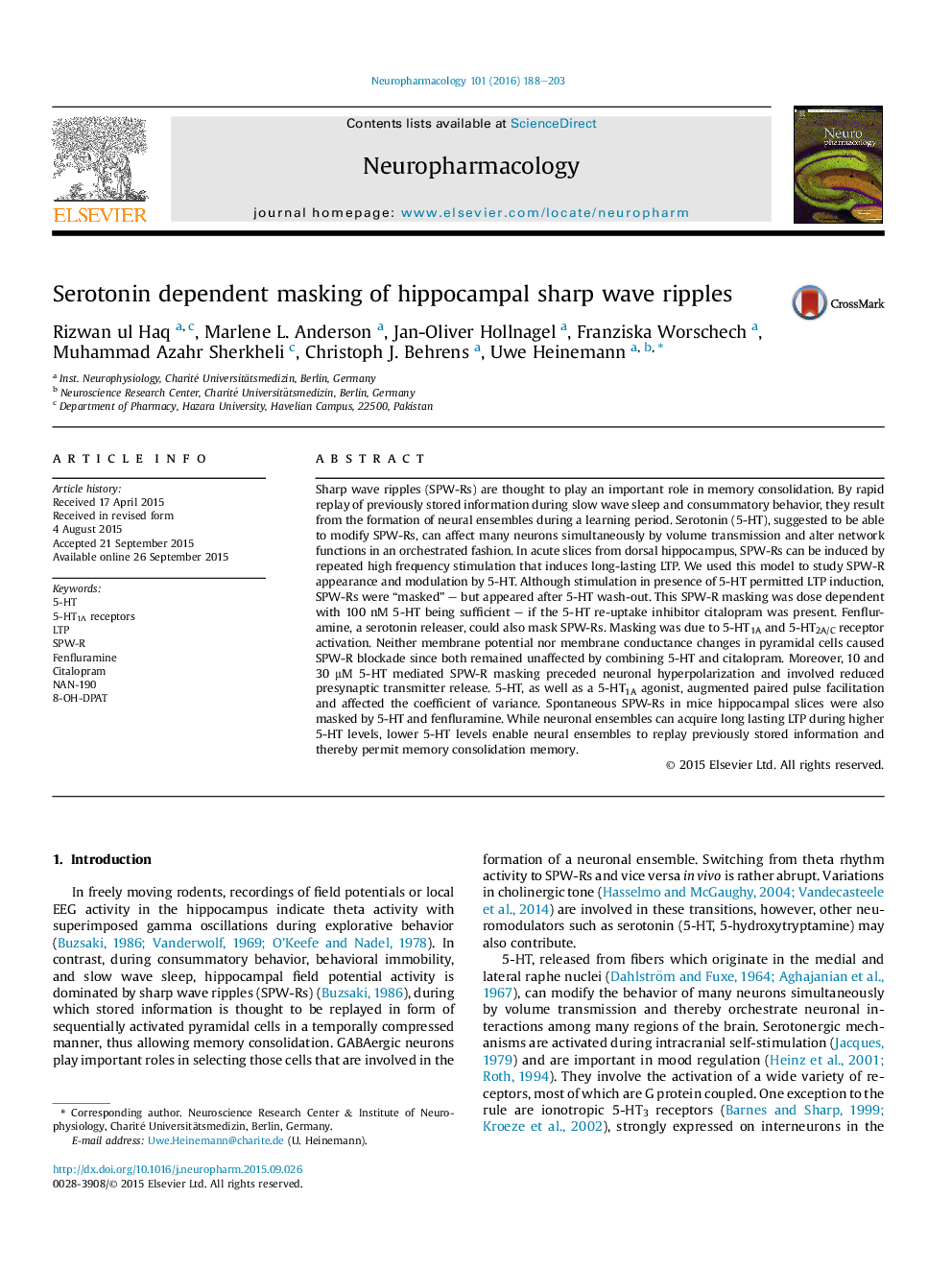| Article ID | Journal | Published Year | Pages | File Type |
|---|---|---|---|---|
| 2493111 | Neuropharmacology | 2016 | 16 Pages |
•Serotonin masks sharp wave ripples but not induction of LTP.•5-HT1A and 5-HT2A/C receptors involved.•Effect mediated probably by presynaptic modulation.•Postsynaptic hyperpolarisation in pyramidal cells not required.•Effects present in rats and mice.
Sharp wave ripples (SPW-Rs) are thought to play an important role in memory consolidation. By rapid replay of previously stored information during slow wave sleep and consummatory behavior, they result from the formation of neural ensembles during a learning period. Serotonin (5-HT), suggested to be able to modify SPW-Rs, can affect many neurons simultaneously by volume transmission and alter network functions in an orchestrated fashion. In acute slices from dorsal hippocampus, SPW-Rs can be induced by repeated high frequency stimulation that induces long-lasting LTP. We used this model to study SPW-R appearance and modulation by 5-HT. Although stimulation in presence of 5-HT permitted LTP induction, SPW-Rs were “masked” – but appeared after 5-HT wash-out. This SPW-R masking was dose dependent with 100 nM 5-HT being sufficient – if the 5-HT re-uptake inhibitor citalopram was present. Fenfluramine, a serotonin releaser, could also mask SPW-Rs. Masking was due to 5-HT1A and 5-HT2A/C receptor activation. Neither membrane potential nor membrane conductance changes in pyramidal cells caused SPW-R blockade since both remained unaffected by combining 5-HT and citalopram. Moreover, 10 and 30 μM 5-HT mediated SPW-R masking preceded neuronal hyperpolarization and involved reduced presynaptic transmitter release. 5-HT, as well as a 5-HT1A agonist, augmented paired pulse facilitation and affected the coefficient of variance. Spontaneous SPW-Rs in mice hippocampal slices were also masked by 5-HT and fenfluramine. While neuronal ensembles can acquire long lasting LTP during higher 5-HT levels, lower 5-HT levels enable neural ensembles to replay previously stored information and thereby permit memory consolidation memory.
